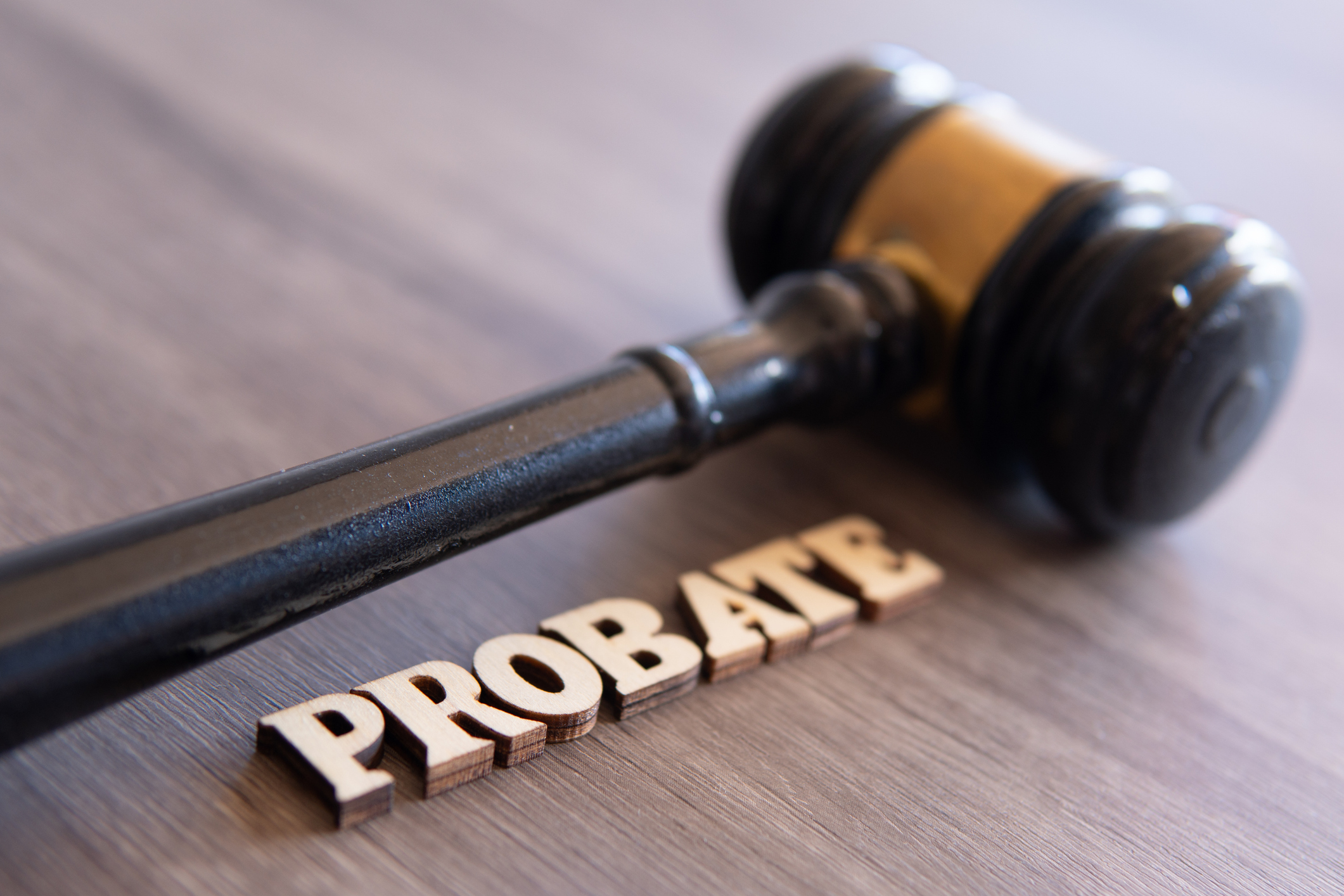The Hidden Cost That's Ruining Vacation Home Dreams
Are rising HOA fees derailing your second home dreams? Annual dues, insurance premiums and taxes are rising, boosting total ownership costs. Here's what you can do.


In the past three decades, retirees and near-retirees have flocked to managed communities — condominiums, townhomes and 55-plus developments — seeking predictable costs and “lock-and-leave” convenience.
Yet, today, a “triple whammy” of rising homeowners' association (HOA) assessments, soaring property taxes and spiking insurance premiums is forcing prospective buyers — and their financial advisers — to rethink whether a second home still fits within their risk tolerance and retirement income plans.
The triple whammy: HOA fees, taxes and insurance
In many resort-style communities, annual HOA fee hikes of 10% or more are commonplace.
From just $107.88 $24.99 for Kiplinger Personal Finance
Become a smarter, better informed investor. Subscribe from just $107.88 $24.99, plus get up to 4 Special Issues

Sign up for Kiplinger’s Free Newsletters
Profit and prosper with the best of expert advice on investing, taxes, retirement, personal finance and more - straight to your e-mail.
Profit and prosper with the best of expert advice - straight to your e-mail.
At the same time, hurricane and wildfire insurance premiums — once an afterthought for lock-and-leave investors — have become alarmingly volatile.
According to Insurify, the average homeowner will pay an extra $261 in insurance premiums by year’s end; Florida remains the most expensive state, with average annual premiums projected to reach $15,460 in 2025.
Property taxes, too, continue to apply upward pressure on ownership costs. Although Florida legislators have debated property-tax reform, including outright elimination, relief remains elusive.
As a result, combined carrying costs increasingly outweigh vacation-home cash flows, especially when investors consider opportunity costs in today’s 4%-plus money-market environment.
Florida’s insurance crisis and its ripple effects
No state illustrates this perfect storm better than Florida.
In 2024, the Sunshine State’s frequent hurricanes — Helene and Milton (PDF) alone inflicted more than $100 billion in damages — sent homeowners’ premiums through the roof.
Nearly 458,000 hurricane claims were filed statewide last year, and climate disasters since 2020 have cost Florida roughly $237 billion, according to the National Centers for Environmental Information.
Faced with mounting losses, 16 insurers have exited Florida’s market since 2017, and another 16 have become insolvent. As of early 2025, 34 of the state’s 67 counties remain at “very high” or “relatively high” risk of hurricane damage, according to FEMA.
To prop up the market, lawmakers have loosened requirements for insurers, but many carriers still balk at the elevated risk, leaving homeowners to shoulder higher premiums and limited coverage options.
HOA fees surge: Coastal and sunbelt metro areas lead the pack
In 2024, median HOA fees jumped more sharply in Florida than in any other major U.S. market. According to The Capitolist:
- Tampa: Up 17.2% to $614 per month (among the 43 largest metro areas)
- Orlando: Up 16.7%
- Fort Lauderdale: Up 16.2%
- Miami: Up 5.7% (median $835 per month)
These fee increases reflect rising maintenance costs, deferred reserve funding and new safety mandates resulting from regulatory reforms.
For prospective buyers, sticker shock is setting in — especially in beachfront and high-rise communities where special assessments can run into six figures, and it could cost $30,000 upfront to join the waiting list.
Regulatory reforms after Surfside: Tall buildings, big bills
In June 2021, the catastrophic collapse of Champlain Towers South in Surfside, Florida, killed 98 residents and revealed glaring gaps in condo-association inspections and maintenance.
Since then, Florida has passed a series of laws to tighten inspection cadences, mandate structural integrity reserve studies and update hurricane-protection requirements.
As real-estate attorney Jordan Lulich of Lulich & Attorneys, P.A. in Vero Beach, Florida, explains, “Older high-rise condos must now complete milestone inspections, often costing hundreds of thousands of dollars. Developers sometimes buy out troubled buildings to fund necessary repairs, but resale activity remains weak compared to single-family homes.”
From 2022 through 2025, Florida lawmakers have:
- Mandated milestone inspections for buildings 25 years and older
- Required structural integrity reserve studies every 10 years (for high-rises) and five years (for midrises)
- Expanded emergency powers for condo associations, allowing quicker action on unsafe conditions
- Updated building code and maintenance requirements, including stricter hurricane retrofits
- Imposed local agency reporting deadlines (by October 1, 2025) for unsafe or deteriorating structures
The upshot: Some owners have already faced assessments near $200,000 to shore up structural reserves, and lenders have tightened borrowing guidelines for condo purchases.
In Indian River County — Lulich’s home market — single-family home sales are up 12.9% year-to-date, while condo sales have plunged 17.8%. Cash buyers dominate transactions: 133 of 176 condo closings in the first quarter (Q1) of 2025 involved all-cash deals.
But it’s not all doom and gloom. “In our market, despite the increase in Canadian sellers, foreclosure rates have remained low compared to previous recessions, and the overall real estate market remains strong, thanks to Vero Beach’s small-town feel and low property taxes,” says Lulich.
Coping strategies: What savvy HOAs are doing
Across the country, boards and developers are scrambling to manage rising costs. In Scottsdale, Arizona, realtor and Compass Arizona co-founder David Newcombe (who also chairs his 217-member HOA board) highlights several best practices:
Transparent, incremental fee increases. Rather than surprise members with a 20% bump, boards aim for smaller, predictable annual rises (3% to 5%). Homeowners prefer consistency over volatility.
Regular reserve study “desk reviews” and on-site inspections every four to five years. Newcombe cites a recent $1 million roadway repair that might have been partially budgeted with better long-range planning.
Master-subordinate HOA structures. In master-planned communities such as 100 Hills at McDowell Mountain Ranch, where Newcombe resides, homeowners pay a one-time joining fee (1% of the purchase price) that helps maintain lower monthly dues. Turnover fees — collected when homes change hands — often generate income for reserves.
Prudent reserve fund investing. Instead of chasing yield, boards seek a balance between liquidity, tax efficiency and capital preservation. Reserves are for major replacements, not day-to-day operations.
Insurance optimization. While desert communities haven’t yet seen Firewise discounts, boards are pursuing community wildfire mitigation plans to qualify for future rate reductions. Nearby, Phoenix-area homeowners pay $300 to $500 per month in HOA dues; some communities even collect one-time “buy-in” assessments.
The “third leg”: Insurance costs on condos and townhomes
Florida condo-insurance premiums jumped 40% on average in 2023, according to a report from Naples, Florida-based realtor Ed DiMarco. Since 2020, some association-level policies have more than doubled. In 2024, average annual condo insurance runs $2,500 to $3,500 vs just $1,000 three years ago.
Drivers include:
- New inspection requirements that elevate perceived risk
- Frequent litigation over storm-damage repairs, spurring carriers to raise rates or exit
- Unpredictable weather events (hurricane remnant floods, high winds, tornado spawn)
Some owners have sold rather than shoulder the escalating tab. For investors, negative cash flow on a vacation property — driven by HOA dues, insurance and taxes — often wipes out any rental income or tax benefit.
Is a vacation home still worth it?
“Every dollar you tie up in a second home could earn 4% or more in a money-market fund,” observes Ross Levin, founder of Accredited Investors Wealth Management.
If you pay cash, factor in 1% to 2% per year for upkeep, plus insurance, property taxes and utilities (roughly 1% of home value). With a 20% down payment and a 6% mortgage, annual carrying costs can exceed 7.5% of the purchase price.
Example: A $400,000 vacation home could cost more than $30,000 a year to maintain — before furnishings, landscaping, repairs or “toys” such as ATVs or boats. Levin asks: Would you rather spend that budget on renting or family travel?
Five action steps for prospective HOA condo or homeowners
Request and review the reserve study
- Obtain the most recent reserve study report (and any supplemental “desk reviews”)
- Confirm the community has funded at least 70% of its long-term reserve requirements
- Look for planned near-term capital projects — roofs, elevators, roadways — and ask whether special assessments are anticipated
Understand fee-increase policies and caps
- Ask the board or management company to share the HOA’s fee-increase history for the past five years
- Determine whether dues increases are capped by a fixed percentage or approved by homeowner vote
- Clarify how expense overruns are handled: Will the board levy a special assessment or tap other reserves?
Scrutinize insurance coverage and costs
- Obtain a copy of the master policy declaration page and confirm deductibles and limits
- Ask how often the association rebids or renews its insurance and whether umbrella coverage is in place
- Determine which perils are excluded — flood, earthquake, or sinkhole — and estimate your out-of-pocket risk
Evaluate local regulatory environment
- If considering a Florida condo, confirm compliance with post-Surfside inspection laws (milestone inspections for buildings age 25 and older, structural integrity reserve studies)
- In wildfire-prone areas, ask whether the HOA participates in Firewise or other risk-mitigation programs
- Research recent special legislation (e.g., new building-code requirements, hurricane retrofits) that might trigger additional assessments
Conduct a thorough financial and market analysis
- Calculate total carrying costs: HOA fees plus insurance plus property taxes plus utilities plus maintenance (1% to 2% of home value annually)
- Compare projected carrying costs against potential rental income or personal‐use benefits
- Factor in opportunity cost: If you invest your down payment elsewhere (e.g., a 4% money-market fund), could you net a comparable or better return?
By following these five steps — reviewing reserve studies, clarifying fee policies, vetting insurance, checking regulatory obligations and running a comprehensive financial analysis — prospective buyers can make a more informed decision about whether an HOA condo or townhome still fits their retirement or investment goals.
Pro tip from David Newcombe
Prospective buyers need to obtain and thoroughly read the community's Governing Documents. These include the CC&Rs (Covenants, Conditions and Restrictions), Rules and Regulations, and Architectural Guidelines.
Residents must live by these rules (which will also include a limit on how much the HOA fees can rise yearly).
If you don't like the rules, don't buy. For example, you might not be able to park your car in a driveway overnight or put up a garden swing set for your kids.
States with the highest insurance premiums
According to Insurify, these 10 states are projected to have the largest insurance premiums in 2025, showing the projected average premium, projected increase and percentage increase:
- Florida $15,460, $1,320, 9%
- Louisiana $13,937, $2,974, 27%
- Oklahoma $8,369, $607, 8%
- Colorado $6,630, $646, 11%
- Texas $6,522, $516, 9%
- Alabama $5,831, $386, 7%
- Nebraska $5,203, $478, 10%
- Mississippi $5,198, $389, 8%
- Arkansas $5,077, $588, 13%
- Kansas $4,782, $226, 5%
Is now a good time to buy a second home?
Rising HOA assessments, property taxes and insurance premiums have combined to make owning a second home, especially in Florida and other high-risk markets, more expensive and unpredictable than ever.
Stringent post-Surfside inspection laws and inflationary pressures on maintenance and contractor costs have driven annual HOA dues up by double digits in many communities.
Meanwhile, climate-related disasters keep insurance rates elevated or push carriers out of state markets altogether.
As a result, would-be vacation-home buyers face higher monthly dues, larger special assessments and limited coverage options. Investors and retirees must re-evaluate whether a second home still makes financial sense in today’s volatile environment.
Related content
Profit and prosper with the best of Kiplinger's advice on investing, taxes, retirement, personal finance and much more. Delivered daily. Enter your email in the box and click Sign Me Up.

David Conti, a New Hampshire-based financial writer, and Retirement Coach at RetireMentors, offers over 20 years of experience in retirement planning and financial communications. During his 17-year tenure at Fidelity Investments, he served as the personal finance and retirement editor for Fidelity Viewpoints and managed The Truth About Your Future newsletter, covering topics like crypto, longevity and personal finance. As the Founder of RetireMentors, David focuses on the nonfinancial aspects of retirement, guiding pre-retirees who have planned financially but seek purpose and structure in their post-career lives.
-
 4 Great Tools to DIY Your Own Financial Plan
4 Great Tools to DIY Your Own Financial PlanSmart Savings Several tools picked out by Kiplinger that DIYers can use to make their own financial plan.
-
 The 7-Month Deadline That Sets Your Lifetime Medicare Premiums
The 7-Month Deadline That Sets Your Lifetime Medicare PremiumsUnderstanding Medicare enrollment is crucial, as missing deadlines can lead to permanent late enrollment penalties and gaps in coverage.
-
 Retirees Living in Portugal: You Need a Post-NHR Tax Strategy
Retirees Living in Portugal: You Need a Post-NHR Tax StrategyWhen your 10-year Non-Habitual Resident tax break ends, you could see your tax rate soar. Take steps to plan for this change well before the NHR window closes.
-
 The 7-Month Deadline That Determines Your Lifetime Medicare Premiums
The 7-Month Deadline That Determines Your Lifetime Medicare PremiumsUnderstanding Medicare enrollment is crucial, as missing deadlines can lead to permanent late enrollment penalties and gaps in coverage.
-
 If You're a U.S. Retiree Living in Portugal, Your Tax Plan Needs a Post-NHR Strategy ASAP
If You're a U.S. Retiree Living in Portugal, Your Tax Plan Needs a Post-NHR Strategy ASAPWhen your 10-year Non-Habitual Resident tax break ends, you could see your tax rate soar. Take steps to plan for this change well before the NHR window closes.
-
 Could Target-Date Funds With Built-In Income Guarantees Be the Next Evolution in Retirement Planning?
Could Target-Date Funds With Built-In Income Guarantees Be the Next Evolution in Retirement Planning?With target-date funds falling short on income certainty, retirement plans should integrate guaranteed income solutions. Here is what participants can do.
-
 7 Ways to Plan Now to Save on Medicare IRMAA Surcharges Later
7 Ways to Plan Now to Save on Medicare IRMAA Surcharges LaterUnderstand the critical two-year lookback period and why aggressive planning before you enroll in Medicare is the most effective way to minimize IRMAA.
-
 How Much Income You Really Need to Afford a $500,000 Home
How Much Income You Really Need to Afford a $500,000 HomeAs home prices increase, the income needed for a house is also climbing. We break down what you need to earn to afford a $500,000 home.
-
 The 'Best of Both Worlds' Rule of Retirement Spending
The 'Best of Both Worlds' Rule of Retirement SpendingIt's the 4% rule on steroids. Here's what it is and why it may work for you.
-
 Don't Let the Court Decide: Test Your Knowledge on Avoiding Probate
Don't Let the Court Decide: Test Your Knowledge on Avoiding ProbateQuiz Test your basic understanding of why having a estate plan is crucial to avoiding probate in our quick quiz.
-
 Your Year-End Tax and Estate Planning Review Just Got Urgent
Your Year-End Tax and Estate Planning Review Just Got UrgentChanging tax rules and falling interest rates mean financial planning is more important than ever as 2025 ends. There's still time to make these five key moves.